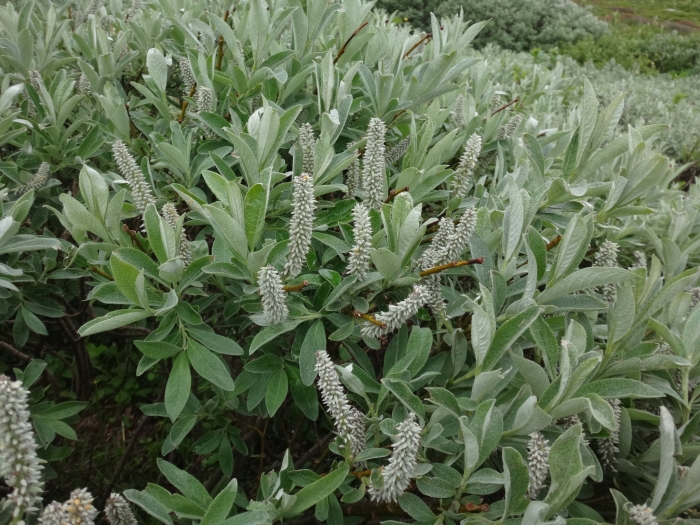Swiss Willow
(Salix helvetica)
Swiss Willow (Salix helvetica)
/
/

Christian Berg
CC BY 4.0
Image By:
Christian Berg
Recorded By:
Copyright:
CC BY 4.0
Copyright Notice:
Photo by: Christian Berg | License Type: CC BY 4.0 | License URL: http://creativecommons.org/licenses/by/4.0/ | Rights Holder: Christian Berg | Publisher: iNaturalist | Date Created: 2018-06-25T14:02:21-07:00 |

























Estimated Native Range
Summary
Salix helvetica, commonly known as Swiss Willow, is a dwarf, erect shrub native to the alpine and subalpine zones of the Swiss Alps and the Tatra Mountains in the western Carpathians. It thrives at elevations between 5,250 and 8,900 feet, where it is adapted to rocky soils and harsh, cold conditions. The Swiss Willow typically grows up to 20 inches in height and width, featuring small, rounded leaves with a distinctive silvery underside that contributes to its ornamental appeal. In spring, it produces silvery catkins that appear simultaneously with the leaves, adding to its decorative value.
The Swiss Willow is valued for its compact form and silvery foliage, which can add texture and contrast to rock gardens, alpine collections, and small garden spaces. It has earned the Royal Horticultural Society’s Award of Garden Merit, indicating its exceptional performance in cultivation. This shrub prefers full sun to partial shade and requires well-drained soil; it is tolerant of poor soils and can handle drought once established. While it is generally low-maintenance, it may be susceptible to willow scab and other fungal diseases. Swiss Willow is not known for aggressive roots or significant invasiveness, making it a safe choice for gardens near structures.CC BY-SA 4.0
The Swiss Willow is valued for its compact form and silvery foliage, which can add texture and contrast to rock gardens, alpine collections, and small garden spaces. It has earned the Royal Horticultural Society’s Award of Garden Merit, indicating its exceptional performance in cultivation. This shrub prefers full sun to partial shade and requires well-drained soil; it is tolerant of poor soils and can handle drought once established. While it is generally low-maintenance, it may be susceptible to willow scab and other fungal diseases. Swiss Willow is not known for aggressive roots or significant invasiveness, making it a safe choice for gardens near structures.CC BY-SA 4.0
Plant Description
- Plant Type: Shrub
- Height: 2-5 feet
- Width: 2-3 feet
- Growth Rate: Moderate
- Flower Color: N/A
- Flowering Season: Spring
- Leaf Retention: Deciduous
Growth Requirements
- Sun: Full Sun
- Water: Medium
- Drainage: Medium
Common Uses
Bee Garden, Border Plant, Low Maintenance, Rock Garden
Natural Habitat
Alpine and subalpine zones of the Swiss Alps and the Tatra Mountains
Other Names
Common Names: Helvetica Willow, Alpine Willow, Mountain Willow
Scientific Names: , Salix helvetica, Salix arenaria, Salix eleagnifolia, Salix gmeliniana, Salix helvetica var. angustifolia, Salix helvetica var. concolor, Salix helvetica var. dentata, Salix helvetica var. discolor, Salix helvetica var. macrostachia
GBIF Accepted Name: